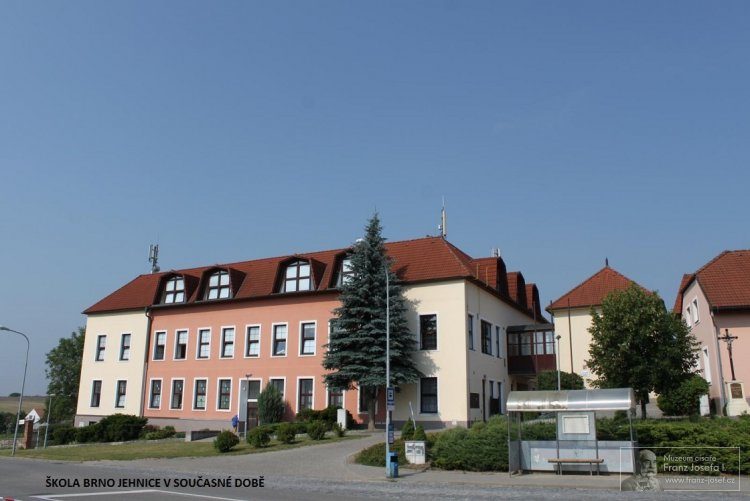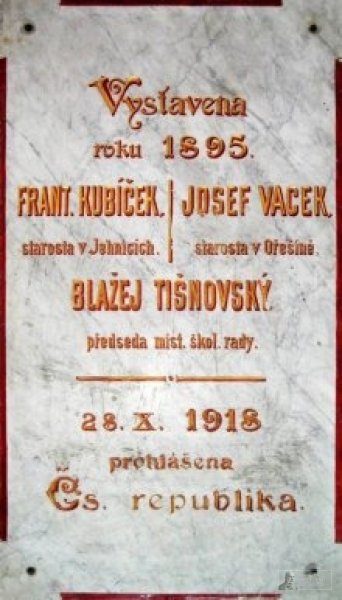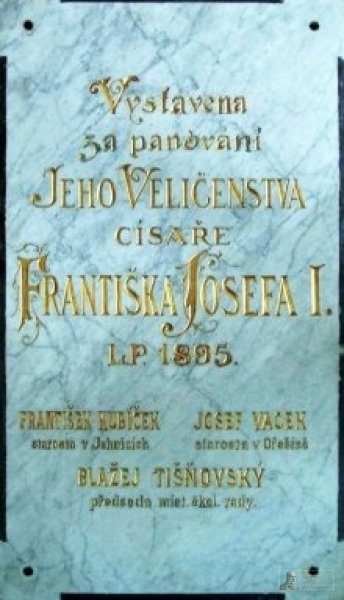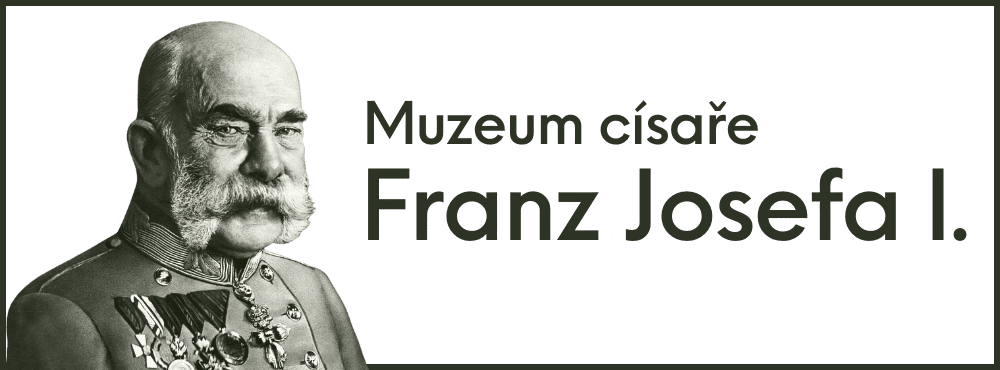The commemorative plaque is in the entrance area of the school
The commemorative plaque is in the entrance area of the school, it had an interesting fate. The historian describes it
PhDr. Miroslava Menšíková in Jehnické listy from June 2005.
It was only in 1894, when the educated and progressive teacher Julius Svoboda became the administrator of the school, that plans were drawn up and on April 24, 1895, the foundation stone of the new school building was laid. In a very short time of seven months, the builder Emil Procházka from Brno built a new three-classroom school on a plot of land donated for that purpose by the owner of the estate, Mr. Offerman. On November 24, 1895, the school building was ceremonially consecrated and handed over for use.
The memorial plaque in the Jehnice school was unveiled in 1895. The signature in the lower right corner informs us that the marble plaque with the gilded text was made by the fifty-year-old Brno sculptor and stonemason Johann Tomola (1845-1907), the author of a number of other memorial plaques and monuments, but also the creator of many gravestones in Brno cemeteries.
October 1918 came and with it came a problem. The new Czechoslovak Republic, founded on the ruins of Austria-Hungary, considered it inadmissible for symbols of the hated monarchy to remain in public places. In the first days after October 28, there were mass actions in Brno, when angry crowds demonstratively removed shields with Austrian eagles, commemorative plaques, statues, etc. from buildings and public spaces, and mostly destroyed them on the spot. Only later did the enlightened people finally speak up, who had so far called in vain that "it is necessary to save and preserve even the monuments of the old regime and even collect them as documents".
We do not know today how the situation in the lamb school developed. I guess she wasn't that dramatic. The manager apparently had the board removed and stored, perhaps in the attic. In any case, for him the plate represented a certain work of art for which the municipality had to pay the sculptor. However, he certainly regretted that the names of the mayors of Jehnice and Orešín and the chairman of the local school board, who were instrumental in building the school, would also fall into the dust of oblivion.
At the time of the First Republic, an idea suddenly came to mind: we turn the old plate over and let a new text be engraved on its back. That also happened. Were they inspired by Jehnice in Medlánky, where in 1932 they proceeded in a similar way in the school at Hudcová street number 35? Or was the inspiration the other way around?
Einhundert Jahre später, beim Wiederaufbau und der Fertigstellung der Lamb-Schule, wurde die Tafel mit dem Text in ihrer ursprünglichen Form erneut im Eingangsbereich der Schule angebracht. Es ist interessant, dass so etwas nach mehr als siebzig Jahren seit der Gründung der Tschechoslowakischen Republik niemanden überrascht. Gleichzeitig stellte die Tschechoslowakische Republik im Gesetz Nr. 50 vom 19. März 1923 der Sammlung von Gesetzen und Verordnungen in §26 (Verbot der Entfernung oder Errichtung illegaler Denkmäler) unter anderem fest, dass „eine politische (staatspolitische) ) Die Behörde kann die Entfernung von Denkmälern, Inschriften und anderen an einem öffentlichen Ort aufgestellten Denkmälern anordnen, /…/, wenn sie eindeutig staatsfeindlich sind oder wenn sie für ein Mitglied der Herrscherfamilien in Österreich, Ungarn oder Österreich-Ungarn errichtet wurden /…/. Dieselbe Behörde kann auch die Errichtung solcher Denkmäler, Inschriften und Denkmäler für die Zukunft verbieten. /…/ Als öffentlicher Ort gelten Plätze, Straßen, öffentliche Wege, Gärten, Bäder, Schulen /…/“ Die Strafe für diese Straftat war eine Geldstrafe bis zu 10.000 CZK oder eine Freiheitsstrafe bis zu drei Monaten oder beides. Das Gesetz, auch „Gesetz zum Schutz der Republik“ genannt, galt bis 1948, als die Kommunisten auf seine Aufhebung mit der Begründung drängten, dass sie nach diesem Gesetz während der Ersten Republik bestraft wurden.
PhDr. Miroslava Menšíková
Source: Jehnické listy June 2005
http://brno-jehnice.cz/historie






